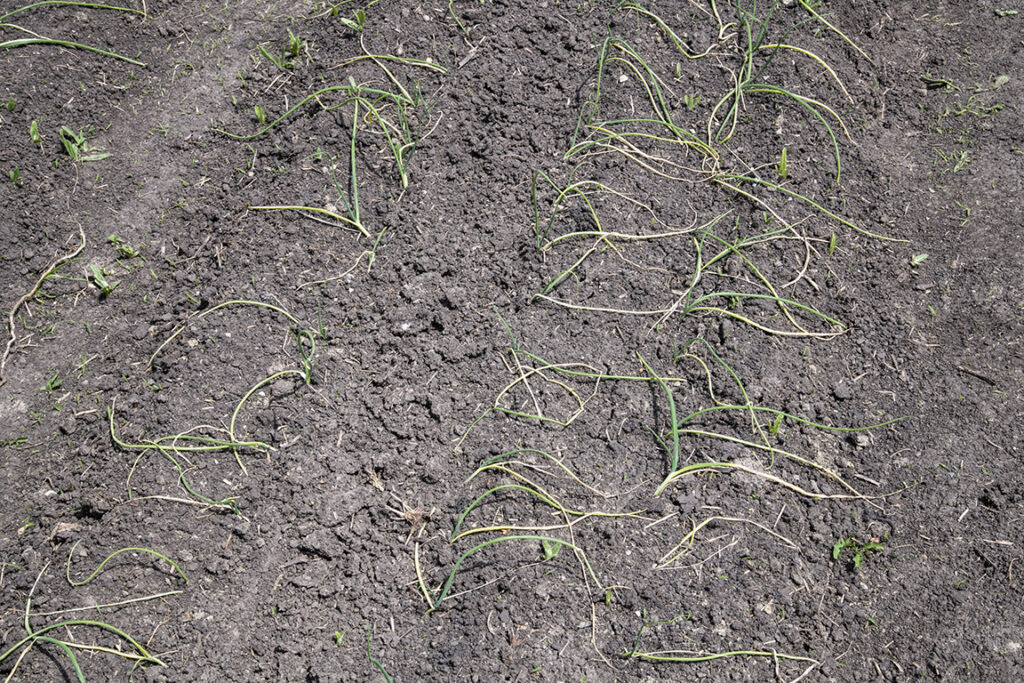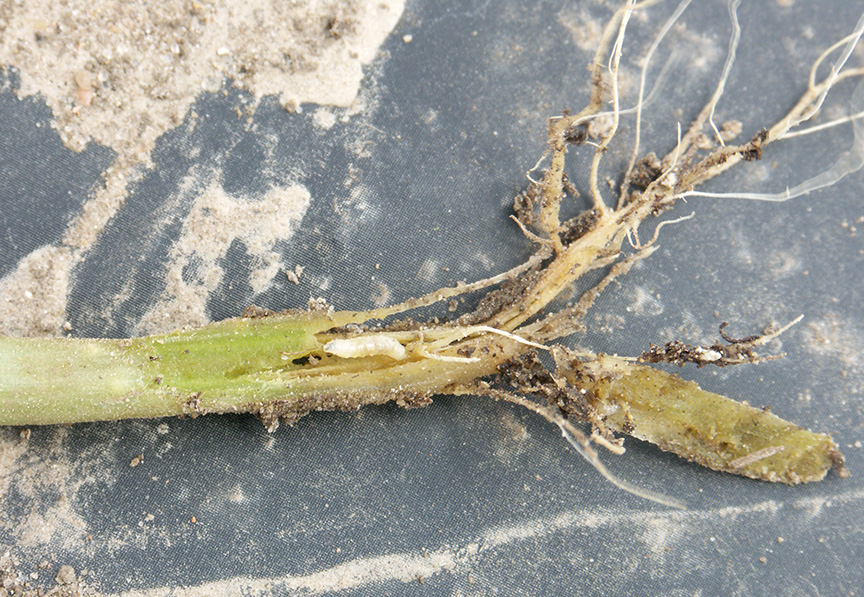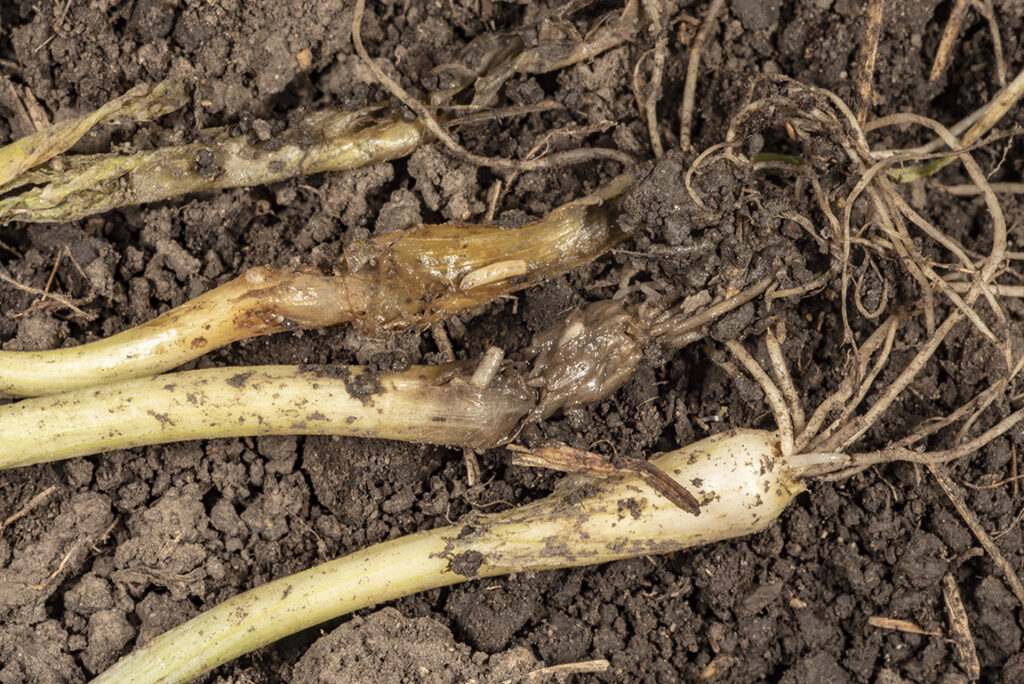The seedcorn maggot, Delia platura, is one of the first pests that will cause damage to vegetables in the spring in our region. This fly, which resembles a house fly but is smaller (Figure 1), begins to emerge from the overwintering pupal stage in the soil in early spring. Upon emergence, the flies quickly aggregate over suitable habitats, mate, and begin to lay eggs within 2-3 days. Despite its name, this insect can feed on a wide range of plants, which includes corn, beans, cucurbits (Figure 2), peas, garlic (Figure 3), onions (Figure 4), spinach, brassicas, and solanaceous crops. The most suitable sites for egg laying will be areas that have recently been tilled, planted, or transplanted (Figure 5). High amounts of organic matter decomposing on the soil surface are a major attractant. The eggs are laid on/near the soil surface and hatch within 2- 10 days, depending on soil temperatures; the warmer the soil, the more quickly they develop. The larvae will then travel into the soil in search of a germinating seed or transplant. They will feed on tissues at or below the soil surface. Their damage can sometimes be misdiagnosed as dampening off (fungal infections), wireworm damage, or simply poor stand germination. If the damage is apparent on the above-ground portion of the plant, you can sometimes find the maggot feeding inside the root or shoot at the soil surface. This larva is a white, legless maggot.

Figure 1. An adult seedcorn maggot next to the pupal casing it emerged from (Photo by John Obermeyer).

Figure 5. Onion transplants wilted on the soil due to seedcorn maggot feeding damage on the roots and developing onion bulbs (Photo by John Obermeyer).
Indiana has 3-5 generations of this pest per year, but the first is the most economically damaging. The key to managing this pest relies on cultural strategies. To this end, we can use predictive models to estimate when the climatic conditions are suitable for the adults to emerge from the soil. We do this by tracking the cumulative growing degree days under which the pupal form completes its development to adulthood. The University of Wisconsin maintains a Vegetable Disease and Insect Forecasting Network tool that includes the upper Midwest region, including most of Indiana. You can access the tool here. As of March 11, the southernmost portion of the state has accumulated enough growing degree days to predict a high to very high likelihood of pest presence and damage to young transplant/seedlings. If possible, you should delay planting at least 10 days beyond peak emergence and avoid going into freshly tilled soil. Plant at a time when the soil and air conditions are going to promote plant growth; if the seeds or transplants can’t grow quickly, they are more susceptible to damage. Check out this video to learn more about scouting and prevention found on the Purdue Extension Entomology YouTube Channel: Maggot damage to onion transplants. Refer to the Midwest Vegetable Production Guide for the most recent regional recommendations.


